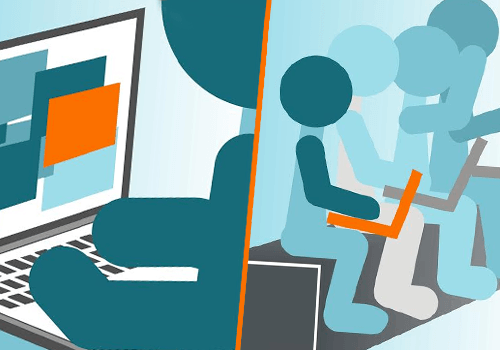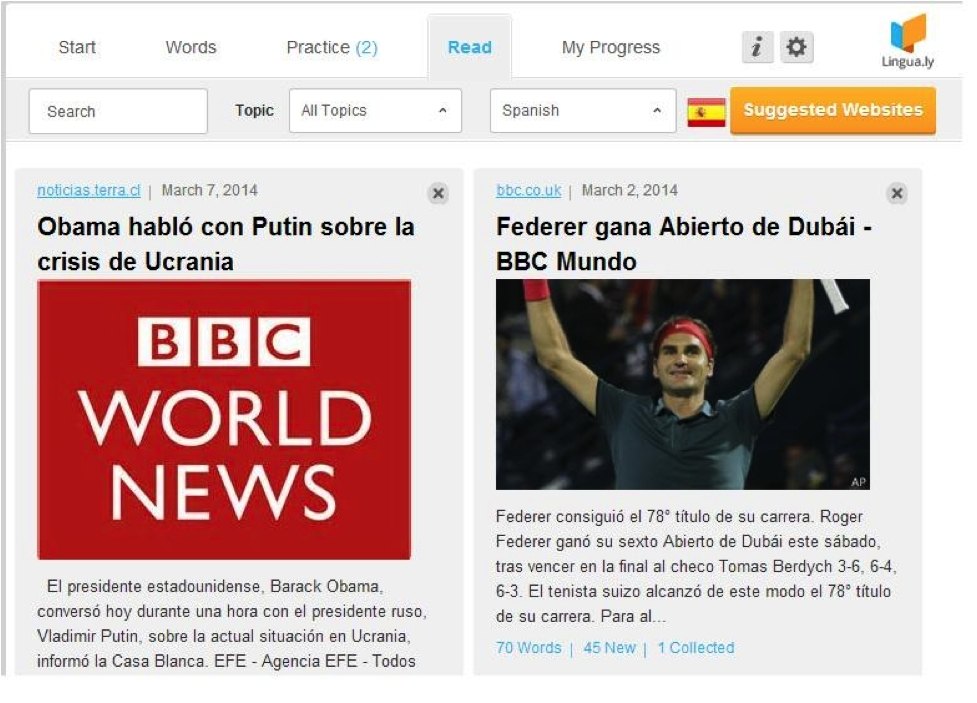Modern-day Language e-Learning – State Of Affairs
The major focus in the area of e-Learning (research, articles and courses) is actually on blended learning solutions for the classroom and K-12. You might find all sort of information and “How to” articles, mostly focused on either content creation or teacher support, but actually less on the individual learner. That is not where the focus of e-Learning should be. Since e-Learning promotes independence and individuality, it should promote personal and autonomous learning solutions for the students. It is particularly important in languages, where the stress is on collaborative outside-of-the-classroom work, instead of being on the individual, usually computer-based work of the student. I have been learning and teaching languages in the e-Learning environment for almost 8 years and even lately, and I believe that in the era of mobile apps and time and space learning independence, there is a lot misunderstanding about how e-Learning should work.
E-learning is not for everyone
E-learning generates a lot of hassle. It is said to be a wonderful tool for efficient and modern learning. It allows for the freedom of time and space devoted to learning and promotes engagement. It is true, however, it is very imprecise. True e-Learning experience is not for everybody. It requires the learner to have a set of certain predispositions, such as a strong self-drive for learning or no inhibitions in using the “e” factor. Not every learner is ready to deal with that.
What are e-Learning and blended learning anyway?
Before going any further, it is useful to draw the distinction between e-Learning and blended-learning. E-learning is an umbrella term for any learning done with the help of technology. It is the interaction between the human and the computer. In other words, interactivity is e-Learning. It is the immediate feedback, the stimulant, the input so crucial in the process.
According to the common opinion blended-learning combines regular classroom activities with out-of-the-classroom, technology-supported collaborative work. And as this definition might be sufficient for most school subjects, it is misconstrued for language learning and unjustly favors classroom and group over individual, solitary and efficient learning experience. Teaching physics differs from teaching English literature and it definitely differs from teaching languages, so the approach to each should be different.
Languages should go their separate ways
So why should the approach to linguistic e-Learning be different from other subjects? A lot of students and teachers still believe that language learning is all about communication. It is partially, but it is also much more. Please do not confuse the process of learning with the final outcome of knowing a language.
Language learning is about developing a new thinking pattern and a different mental reality structure. The misconception on language learning's communicative aspect influences the way e-Learning and online learning or teaching strategies are perceived, discussed and developed. If we focus on the individual mental process of learning a language, we shall see how different it should be from the highly promoted classroom model, where the main stress is on communication and collaboration in the process. So let us answer the fundamental question.
Do I need a class to learn?
No, I don't. There is a lot of pressure on community and collaborative learning and this is considered the major upside of e-learning, while it should be quite the opposite. Community learning is a major misconception when applied to everyone. Collaboration is often forced upon the learner who, not necessarily wants to share the learning experience with others. Though it might be perceived as a controversy to say that learning should not entail collaboration from early stages, I have witnessed a lot of proof for that: I have dealt with numerous learners whose learning proficiency flourished when they were not forced to learn with others, but were allowed to learn in solitude. A lot of students do not feel the need to learn with others, or actually they feel a sort of discomfort, when forced to do so. It does not have to have anything to do with them being shy or insecure. It simply means they want their learning process, the complex mental activity they perform, to be their private matter. They trust and confide in the teacher and they do not wish to be distracted by fellow student, who not necessarily are a lot of help.
It is also very important to realize that the profile of an e-Learning student, a one that consciously chooses to learn with individual online tutoring, differs from a regular classroom student. They do not choose such form of learning just because it is a time saver. They choose e-learning because they feel they can use their potential to its fullest and will not have their mental process interrupted by others.
I am not negating the value and impact of collaboration and group communication. It just needs to be placed right in the whole process and be the field to practice. It is essential at some higher levels of linguistic proficiency, but needs to be used to polish what we already know, not to introduce new information. Collaboration should not be considered the core of language e-Learning, since no peer-filled class is essential for making headway.
The true value of e-Learning
The success factor for acquiring a foreign language is practice and feedback. A lot of practice and a lot of feedback. Language learning is specific, since the amount of practice is actually what constitutes learning. It is not enough just to acquire the theory, understand and remember and then practice recall. It consists in constant application of the knowledge, until it becomes an intrinsic part of the thinking pattern, when it transforms from information into process. Online activities make it easier to practice knowledge and get immediate feedback, thus allow for faster language acquisition, quicker internalization of the learning material.
In e-Learning the student can practice the learning material, internalizing it on their own, away from the outside pressure. They can refer to any source they need, be it the teacher, the handbook or even a webpage to go through difficult aspects. And then they can practice some more. There are a lot of various e-Learning resources (videos, texts or mobile apps) to serve as the battle field. They provide useful examples, even more rich content and – the interactivity. All for practice, for more automation, for immediacy, for the real value of e-learning. The human factor – the teacher, however, – is indispensable. The teacher serves as the guide, the motivator and the one keeping hands on the student's progress.
1:1 tutoring – the future
Successful e-learning consists in the student-teacher online interaction, as opposed to regular teacher-class solution. It is surprising that 1:1 tutoring online is paid very little attention. Thought it is becoming increasingly popular and has been around for a couple of years, in terms of professional coverage it is left aside. When Coursera offered a MOOC on online teaching (“Learning to teach online”), the instructors discarded this aspect, saying that it is just an emerging trend and that they do not have enough knowledge on the topic yet.
Nevertheless, it is the 1:1 online tutoring that is the core of e-Learning, the true blended learning. Modern and efficient blended learning solution should first of all consist in online classes with a teacher (via Skype, Hangout or a virtual classroom), who serves as a helping hand in understanding and correcting, and in a lot of self-work for practice online on the part of the student. This is true blended learning.









